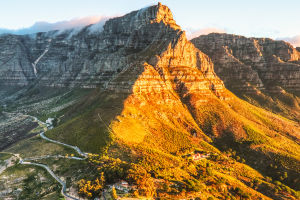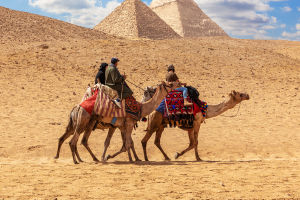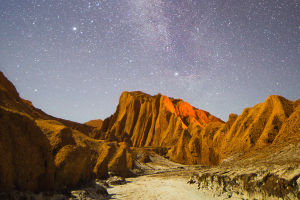People often say, "You have to see the Grand Canyon to believe it." And while that's true, what many don't realize is: how you see it makes all the difference.
If you stick to just the most popular overlooks and quick photo stops, you're missing the soul of the place. Let's talk about how to experience the Grand Canyon in a way that's deeper, less crowded, and surprisingly doable—even if you're short on time.
1. Skip the Crowds: Go South—but Not Just to the Village
Most travelers head straight to Grand Canyon Village on the South Rim, and for good reason: it's got amenities, shuttle buses, visitor centers, and famous viewpoints like Mather Point and Yavapai Observation Station. But that convenience comes with crowds—especially from March to October.
For a more personal experience, drive a little farther east along Desert View Drive.
Key stops like Lipan Point and Navajo Point often have better views with fewer people. You'll get sweeping perspectives of the Colorado River winding through the canyon, especially at sunset. The difference is stunning—literally fewer elbows, better photos, and a calmer connection to the landscape.
💡 Insider Tip: Arrive at Desert View Watchtower just before closing (usually around 6 p.m.). You'll catch fewer tour groups and more golden light. Entrance is included with your park pass.
2. The Best View Might Be Below the Rim
You haven't really seen the Grand Canyon until you've stepped below the edge. Even a short hike down changes your perspective dramatically. The Bright Angel and South Kaibab Trails are the two main routes.
South Kaibab Trail is our pick for day hikes. Why? It offers better views in less time. A 3-mile round trip to Cedar Ridge takes about 2–3 hours and gives you panoramic canyon exposure with no tree cover. It's steep, yes—but it's also unforgettable.
🎟 Cost: Free with park entry (which is $35 per vehicle, valid for 7 days). No permit needed for day hikes.
🚰 Warning: There is no water on South Kaibab Trail. Bring plenty, especially in warmer months.
Grand Canyon National Park
3. Use the Shuttle—But Know How
One mistake many first-time visitors make? Trying to drive everywhere. During peak months, most roads near the village are closed to private vehicles. But the park's free shuttle system is actually well-designed—if you know the routes.
• Orange Route: Best for sunrise at Yaki Point and hiking the South Kaibab Trail
• Red Route: Runs along Hermit Road with less-accessible viewpoints like Hopi Point and Pima Point
• Blue Route: Circles Grand Canyon Village (hotels, grocery, visitor center)
🚌 Tip: Use the official NPS app and favorite your shuttle stops in advance. It saves you time waiting in the heat, and even lets you track the buses live.
4. Timing Is Everything—Literally
The Grand Canyon changes dramatically depending on when you go. So, when's the "best" time? That depends on what you want.
• Spring (March–May): Wildflowers bloom along the rim, crowds are lighter, and temps are mild
• Summer (June–August): Expect crowds, hot weather, and limited parking. Start hikes by 6 a.m.
• Fall (September–October): Our top pick—fewer people, golden light, and still-warm days
• Winter (November–February): Snow-dusted views and serenity. South Rim stays open year-round.
🌤 Best times of day: Early morning and late afternoon. Not only for lighting, but also for cooler temperatures and fewer tour buses.
5. Stay Inside the Park—If You Can Afford It
Accommodation inside Grand Canyon National Park is limited and books months in advance. But if you can snag a room at El Tovar Hotel or Bright Angel Lodge, the experience is worth every penny.
Waking up inside the park means sunrise on the rim is a short stroll, not a 90-minute drive from nearby towns like Williams or Flagstaff. Rates range from $130 to $400 per night, depending on the lodge and season.
Can't book inside? Consider staying in Tusayan, just 15 minutes south of the entrance. Shuttle service runs from there in high season.
6. Don't Just Look—Learn
The Grand Canyon isn't just about the view. It's also a living classroom of geology, ecology, and human history. Make time for the Geology Museum at Yavapai Point, or join a ranger-led program—some include night sky talks, fossil walks, or storytelling from Indigenous perspectives.
🔍 Example: Learn how the canyon's rock layers reveal nearly 2 billion years of Earth's history—without needing to be a geology nerd. Rangers make it fascinating and accessible.
Before you plan your trip, ask yourself this:
Do you want to just see the Grand Canyon—or do you want to feel it?
There's no wrong way to visit, but if you take a few extra steps—walk a trail, find a quiet overlook, catch a ranger talk—you'll leave with something deeper than a postcard photo.
Have you been to the Grand Canyon already? Or are you planning your first trip soon? Let me know what kind of experience you're hoping for—I'd love to help you make it unforgettable.


